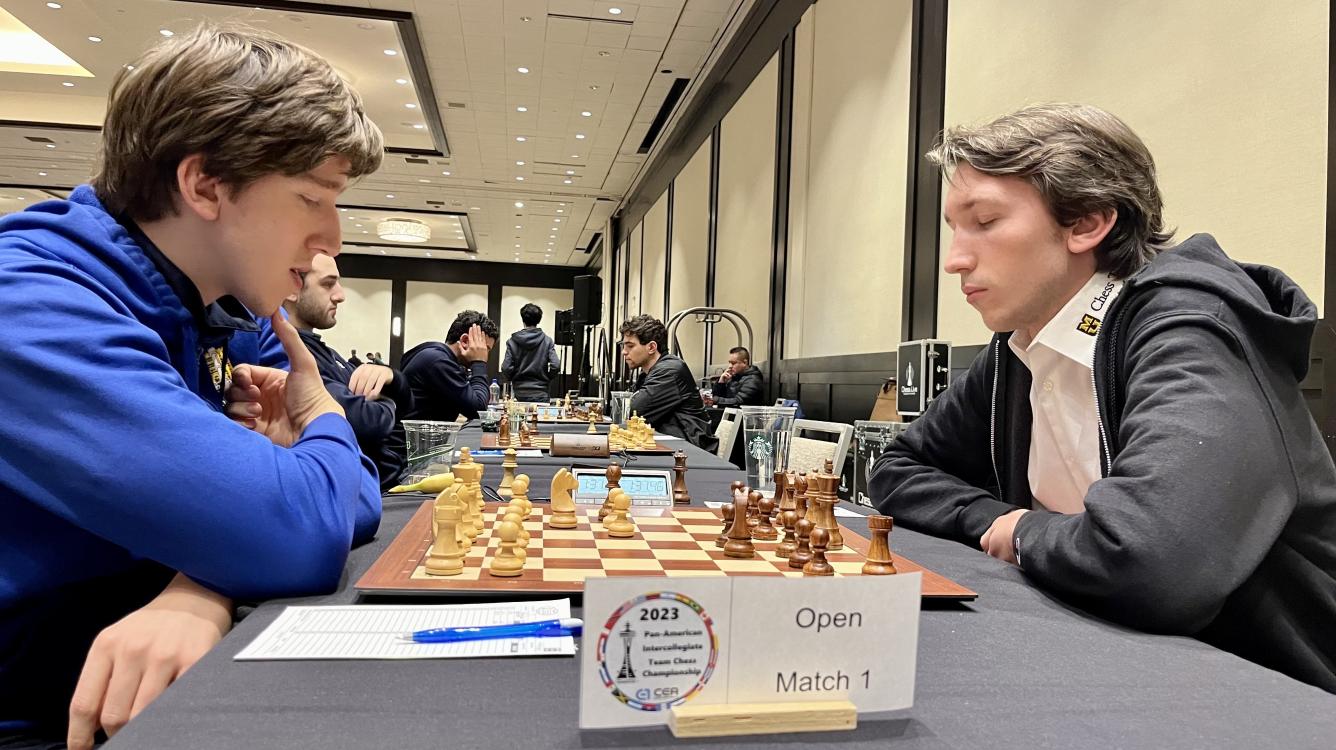
Webster Team A Wins 2023 Pan-American Intercollegiate Team Chess Championship
Team A of Webster University won clear first at the 2023 Pan-American Intercollegiate Team Championship with a perfect score. As the champion, it also earned a coveted spot in the President's Cup with three other top teams.
The battle for first place came down to the final round when Webster A faced off against the then-sole holder of second place, Team B of the University of Texas Rio Grande Valley. Three games ended in draws, but a win by GM Yuniesky Quesada Perez secured the first-place finish for his team.
Also qualifying for the President’s Cup (also known as the Final Four College Chess Championship) are Team A of the University of Missouri, which advanced to second place in the final round, and Team A of Texas RGV, which ends the tournament in third place.
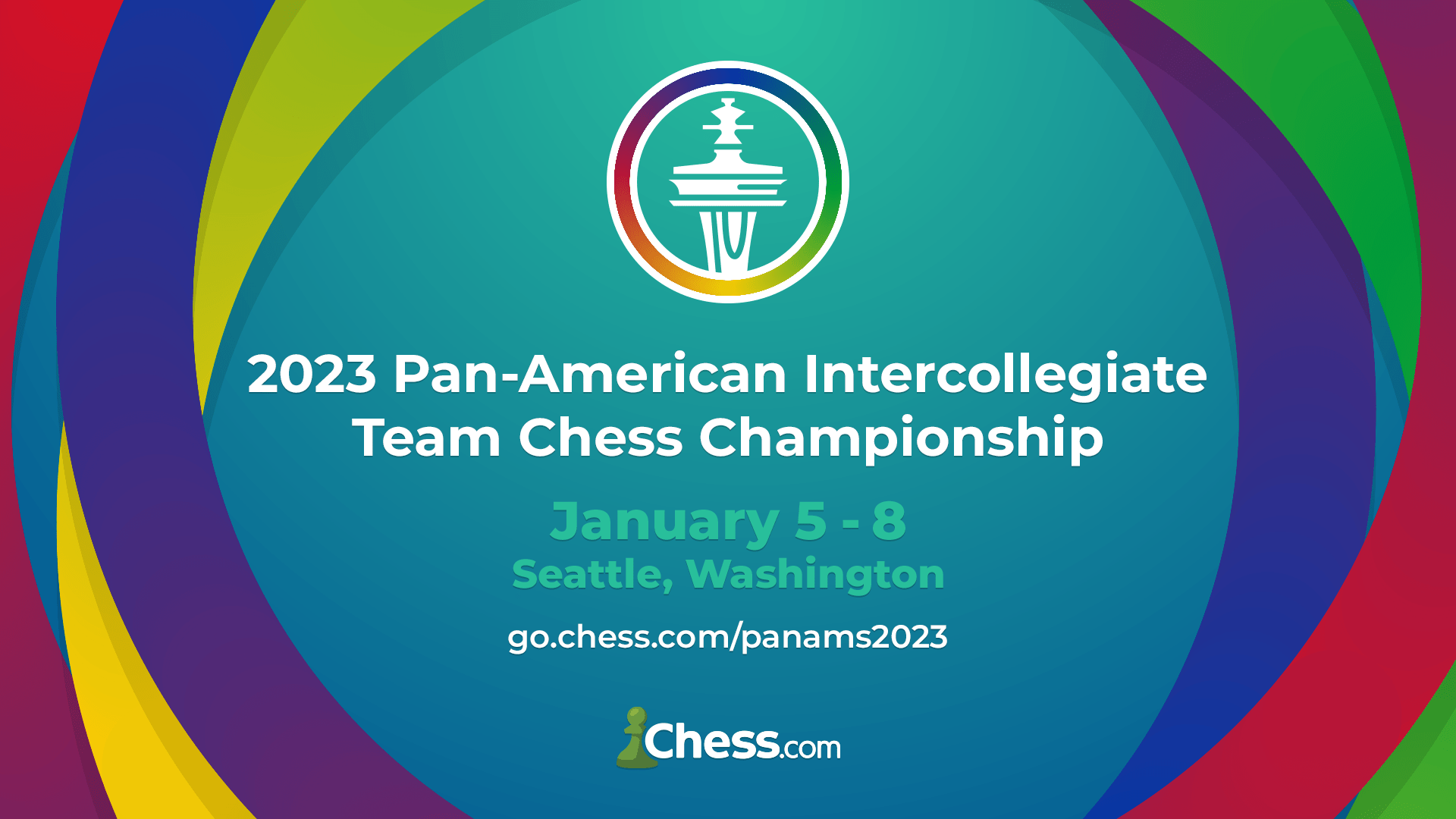
Team B of Texas RGV slipped into fourth place, as determined by tiebreaks, after it lost to Webster A. However, the fourth spot at the President’s Cup has been claimed by Saint Louis University, which ends the tournament in fifth place.
As GM Daniel Naroditsky explained in the final broadcast: “You can’t have the same university take two spots because they can’t play each other.”
The strength of the program at Webster University has commanded international attention for many years. Its teams have won or tied for first in eight Pan-Ams, including winning seven in a row between 2012 and 2018; the most recent win was in 2021. Webster’s head coach is GM Liem Le, who took over in 2021 from GM Susan Polgar, whose spirit inspires the Susan Polgar Institute for Chess Excellence (SPICE) on campus.
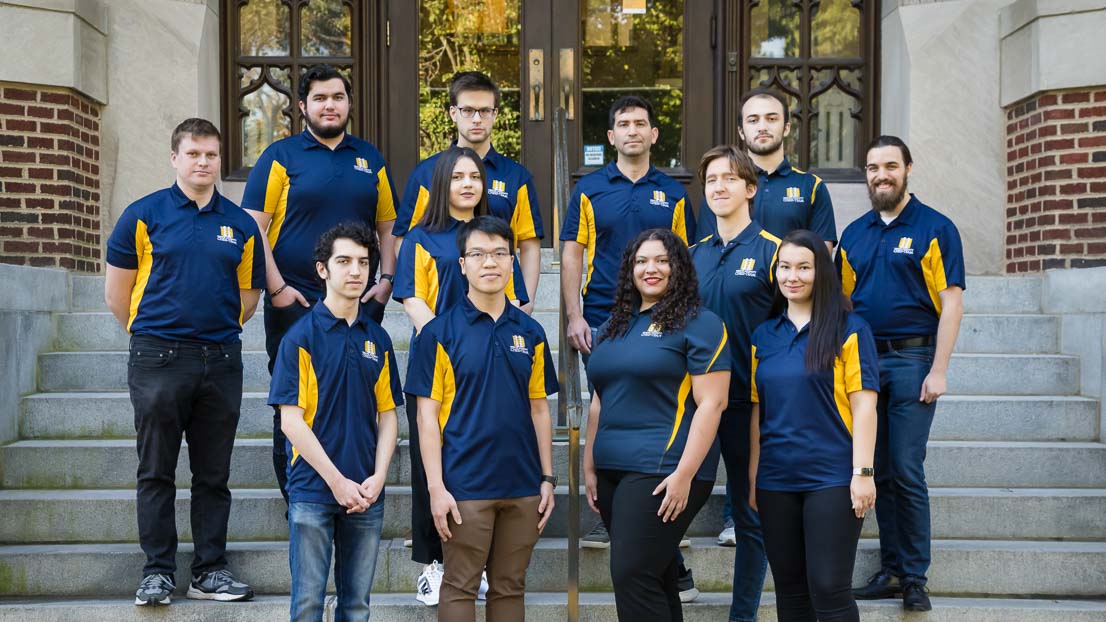
Now that the teams competing at the next President’s Cup are known, anticipation for that event is building rapidly because Saint Louis University won it the last time. Webster has won five and Texas RGV three; Missouri has never competed before in the President's Cup.
This recap highlights how the Pan-Am tournament progressed round by round:
See what happened
You can click here to find all the details of what happened during the event, including games, results, standings, and more, as part of our live events platform.

Round One
In round one, the favored teams won as expected. The top seed, Webster A (average rating of 2687), defeated Team A of Georgia Tech (an average rating of 2196). With no player under 2600, Webster A clearly showed its strength, particularly on board one where GM Benjamin Gledura demonstrated his endgame mastery by advancing the h-pawn against Andrew Titus.
Round Two
In the second round, most of the favored teams again won, although Team A of the University of Toronto (average rating of 2278), the 14th seed, defeated Team B of the University of Texas at Dallas (average rating of 2520). Several upsets in the individual games were notable, even though they didn’t help their underdog teams to win a match. Stanford A (average rating of 2371), the 15th seed, lost to Team A of Texas RGV (average rating of 2610), the fourth seed, as expected.
In that loss, however, IM Carissa Yip, the youngest American woman to earn the international master title, continued her amazing record of defeating grandmasters, which she began at age 10 when she became the youngest female chess player ever to beat a GM. After GM Viktor Gazik slipped on his 61st move, she found a series of accurate moves to force his resignation before his 70th move.
Round Three
At the start of the third round, the leaderboard was jammed with 11 teams at 2.0/2. Webster B, the fifth seed, was one team among the top-10 seeds to lose in this round. It fell to Missouri A, the third seed. In addition, Texas Tech A, the eighth seed, fell to the A team of Texas RGV, the fourth seed. What proved fortuitous for the B team of Texas RGV is that it tied its match with the A team of Saint Louis University.
Showing its dominance, Webster A won three games against the A team of Princeton University. Important in those wins was this victory on its fourth board by Quesada over FM Aydin Turgut.
During round three, GM Cristian Chirila, Missouri coach, joined the broadcast team of Naroditsky and GM Jeffrey Xiong. When asked about the pressure at the tournament faced by either a player or coach, Chirilla responded: “As a player, [it’s] almost not that much pressure. As a coach, I’m feeling the nerves.” He commented on how driven the players are academically and gave the example of GM Grigoriy Oparin, who is pursuing a second master’s degree. Here is the full broadcast of round three.
Round Four
During round four, the top teams started to separate from each other even more. Webster A continued its winning ways and defeated the A team of Texas RGV. Missouri A also moved to 4.0/4 to share the lead by beating the A team of the University of Chicago. Just below these two leaders was the B team of Texas RGV that defeated Toronto A to climb to 3.5/4. So many teams were tied at 3.0/4 that the fight to be among the four teams to advance to the President’s Cup was only beginning and would have to continue in the next round.
The match in round four that captured everyone’s attention featured two top players, GM Awonder Liang of Chicago A and Oparin. They fought to a draw. Chess.com’s Game Review indicates that Oparin played at a 96.4 percent accuracy; Liang’s accuracy was 95.3 percent.
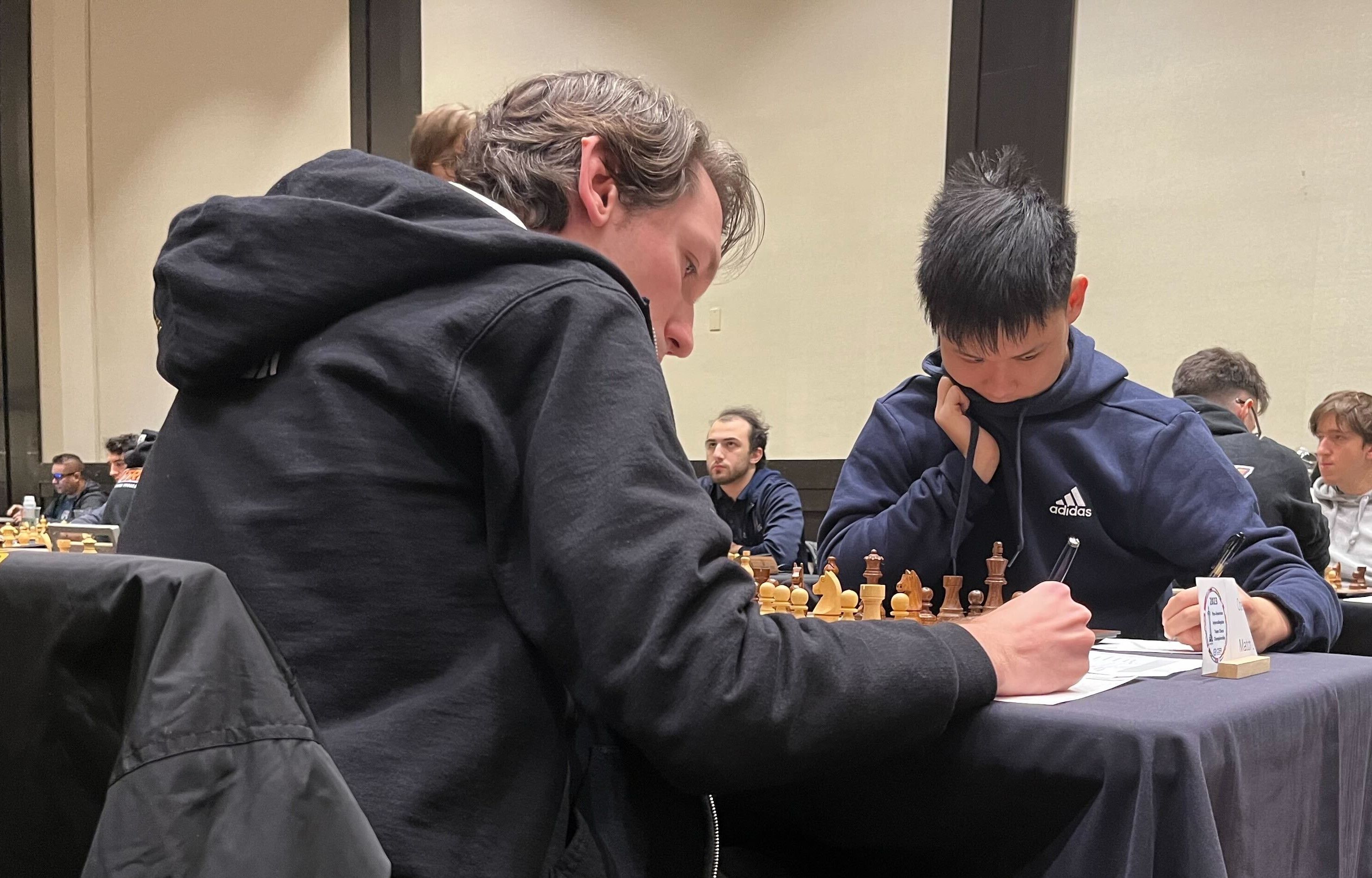
Round Five
Round five brought the clash between Webster A and Missouri A to the forefront, and Webster was victorious by winning the match to grab the lead. Team B of Texas RGV defeated Chicago A and moved into second place by itself.
UTRGV A crushes Harvard with a score of 4-0! After an unfortunate loss against Webster A in the morning, our A-team came back to defeat Harvard A in a convincing manner.
— UTRGV Chess (@UTRGVChessTeam) January 8, 2023
Our B-team scored two crucial victories yesterday putting them in 2nd place going into the last round! pic.twitter.com/xZhdyrWYQP
In the Webster-Missouri faceoff were three draws: Gledura vs. Oparin, Quesada vs. GM Christopher Repka, and GM John Burke vs. GM Harshit Raja. The following victory by GM Aram Hakobyan over GM Mikhail Antipov won the match for Webster A and pushed the team into the President's Cup. The game was even until Antipov’s 26th move that left a pawn undefended, and then Hakobyan began an attack on the kingside that resulted in checkmate.
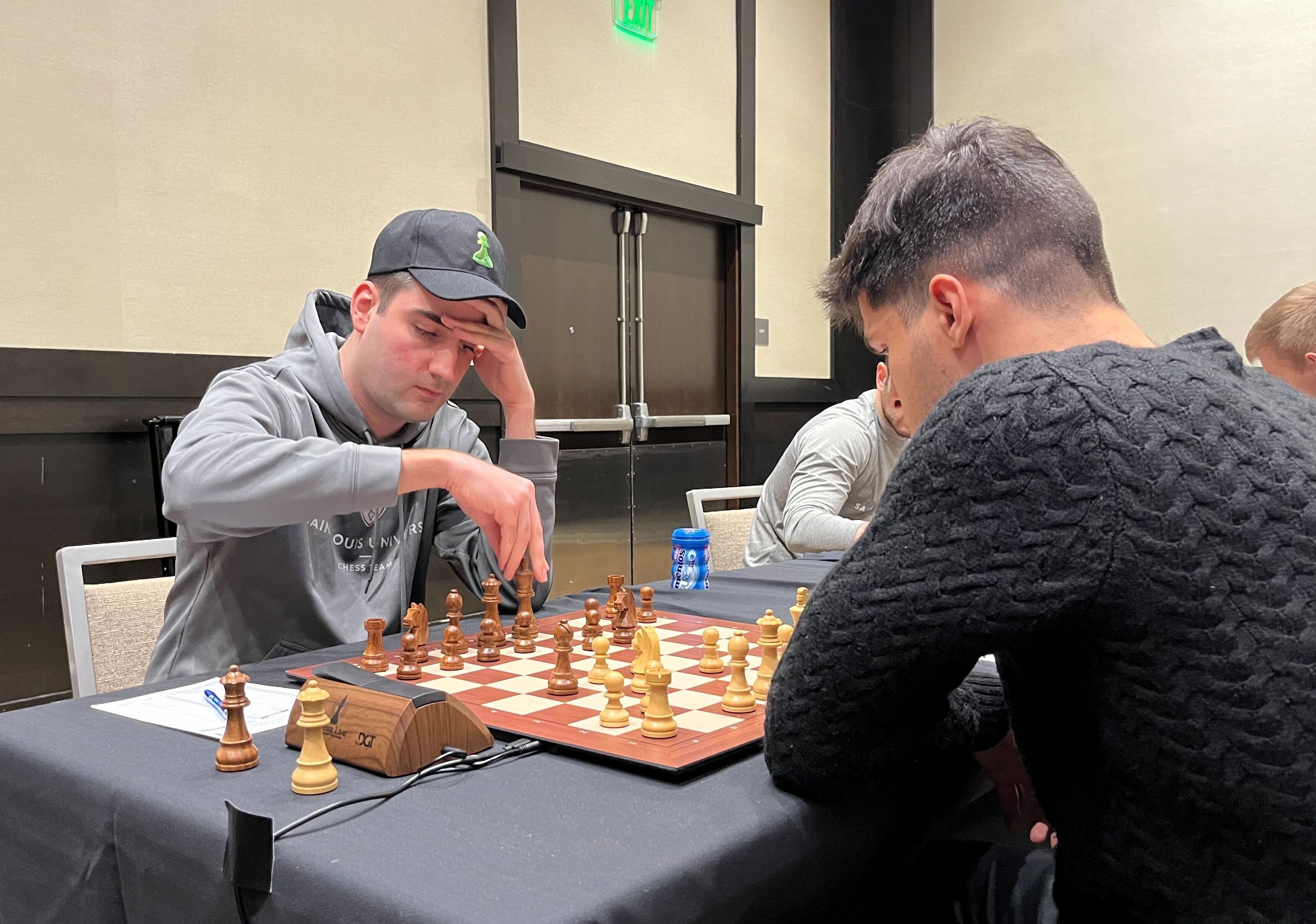
During round five, GM Alex Onischuk, head coach of Texas Tech, joined the broadcast team. Xiong asked him: “Do you think it’s a big advantage to field a team with five players instead of four so that more players can get rested and you can mix in more players?”
Onischuk’s answer probably surprised the more-than-5,000 viewers: “When you have five players, it’s not easy to decide who will play the next game…. People just don’t have a chance to warm up…. They don’t have a chance to get into form…. It makes sense to play with four people.”
It makes sense to play with four people.
—Alex Onischuk, head coach of Texas Tech
Here is the full broadcast of round five.
Round Six
On Sunday, Webster A remained undefeated and untied (5.0/5). Before round six began, Naroditsky remarked: “Webster is the only team that has mathematically secured qualification into the Final Four, given their incredibly good tiebreaks.”
In second place alone was Texas RGV B (4.5/5), which particularly caught the attention of the commentators. Naroditsky said: “They have not lost a single match. They have upset teams that are stronger than them on paper.” The Texas RGV team was also one of three B teams that had higher scores than the A teams of their schools at that point. The other two were Texas at Dallas (4.0/5) and Missouri (3.5/5).
Below the top two teams was a logjam of four teams at 4.0 and four more at 3.5. Round six was needed to add more separation and determine which teams would advance to the President’s Cup, and it did. Winning the final game in the tournament was Quesada who defeated IM Ekin Ozenir and kept Webster A undefeated. The victory was crucial for winning the match against Texas RGV B because the other games had ended in draws.
Neither Quesada nor Ozenir gained a significant advantage for most of the game; however, Ozenir’s poor choice for his 86th move led to his resignation only a few moves later.
By defeating Texas Dallas B, Missouri A finished with a 5.0 score as did Texas RGV A, which defeated Webster B. Tiebreaks awarded second place to Missouri, and Texas RGV A ended in third.
.@Mizzou A finishes the Pan Americans on a 5-1 score, a record in school history, taking home the silver medal!
— Mizzou Chess (@MizzouChess) January 9, 2023
The team qualifies for the first time in our program’s history to the President’s Cup, the Final Four of Collegiate chess!#MIZ 🏆 pic.twitter.com/fwNsABwjrj
The fourth-place team, based on tiebreaks, was Texas RGV B. However, the loss to Webster A pushed Texas RGV B out of the President's Cup because Texas RGV A is a qualifier, as explained earlier. Also on 4.5 with Texas RGV B were Saint Louis University A and Teams A and B of Texas at Dallas.
The final broadcast, which had more than 11,000 viewers, ended after almost five hours of entertaining commentary by Naroditsky and Xiong. As they concluded, they remarked on the rapid growth in collegiate chess. Xiong celebrated that the tournament was “the first time collegiate chess is covered on the biggest stage, on the Chess.com broadcast.”
Naroditsky added: “This tournament represents how college chess has grown and expanded in the last couple of years…. You actually have eight or nine colleges with more than one grandmaster on the roster.” Here is the full broadcast of round six, which erroneously identifies Texas at Dallas as the fourth qualifier for the President’s Cup; Saint Louis University instead is the qualifier based on tiebreaks.
The Pan-American Intercollegiate Team Chess Championship, the biggest intercollegiate team chess tournament in the Americas, took place January 5-8, 2023, in Seattle. The top four teams qualify for the Final Four College Chess Championship this spring.
The format was a six-round Swiss for four-player teams. The time control was 90 minutes for the entire game plus a 30-second increment starting on move one. The event included both an open section and a section for teams whose players have an average rating under 1800. In the open, 47 teams competed; an additional 38 teams competed in the U-1800 section, which was won by the B team of the University of Texas at Austin.


